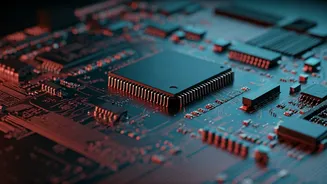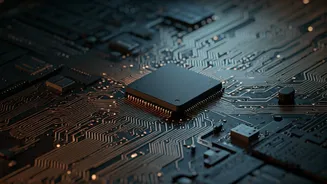Defining Tech Specs
Technical specifications, often abbreviated as tech specs, function as detailed blueprints for a product, system, or service. They meticulously outline
the functionalities, performance metrics, and standards a product must meet. These specifications serve as a common language for engineers, manufacturers, and designers, ensuring everyone is on the same page. Think of them as the foundation upon which the entire project is built, providing the necessary details for development, testing, and ultimately, the final product. Without these specifications, it would be almost impossible to create any complex product.
The Purpose Explained
The main goal of technical specifications is to provide all necessary details of design, manufacturing, and operation. They offer a precise framework for the creation of a product, reducing any potential ambiguity or misinterpretation that may arise during the production process. They also facilitate efficient collaboration among different teams by establishing a unified reference point, and therefore decreasing the need for constant clarification and revision. Furthermore, specifications are essential for quality control. They set the benchmarks to evaluate a product's performance and compliance, guaranteeing that it meets the required standards. Moreover, they aid in future updates and maintenance, offering a detailed record of the product's design and operation, which helps identify and resolve issues more effectively.
Creating Tech Specs
The process of creating technical specifications usually begins with clearly defining the project's goals and needs. This involves gathering information and conducting thorough research. The process entails working closely with engineers, designers, and other key team members to understand the product's intended function, target market, and the overall design. Following these initial phases, the specification document is drafted. This involves detailed descriptions of functions, performance criteria, materials, and other specific requirements. It is a critical aspect to make the specifications as clear and concise as possible, avoiding the use of any technical jargon that could be misinterpreted. Finally, specifications are regularly reviewed and updated to reflect changes throughout the development cycle, guaranteeing that the document stays current and accurate.
Industry Applications
Technical specifications have broad applications across various industries, playing a vital role in ensuring a product's quality, efficiency, and compliance. In the technology sector, they are used to define the characteristics of software applications, hardware components, and network systems. In manufacturing, these documents dictate the materials, processes, and dimensions necessary for producing high-quality goods. Additionally, in the construction industry, technical specifications serve as the foundation for design and building standards, ensuring structural integrity and safety. In each case, these specifications provide a shared understanding of project requirements, facilitating smoother project execution and promoting greater levels of consistency and reliability.
Reading Tech Specs
Reading technical specifications may appear complicated at first, but with practice, it becomes less challenging. Focus on understanding the primary sections, which usually cover the product’s functions, performance metrics, and any applicable industry standards. Pay close attention to definitions of terms and acronyms used throughout the document, which can help in interpreting the specifics. Also, be aware of the units of measurement and how they relate to the product's performance and capabilities. Review the document carefully, and make notes as you go to highlight key points, and clarify ambiguities. The goal is to obtain a strong understanding of what the product does and how it is expected to perform, so the more familiar you are with the specifications, the more readily you will understand the technical details.
Impact and Future
Technical specifications are of utmost importance for driving technological progress. They are the essential tools that allow innovators to develop new technologies and improve existing ones. The importance of these specifications is also growing, as products become more complex and interconnected. In the future, we can expect to see an increase in the degree of automation. This could involve the use of artificial intelligence and machine learning to simplify the creation and interpretation of these specifications, making the process faster and more efficient. The ability to understand technical specifications will continue to be a valuable skill for those working in the tech industry, and indeed, anyone involved in product development, design, or engineering.












